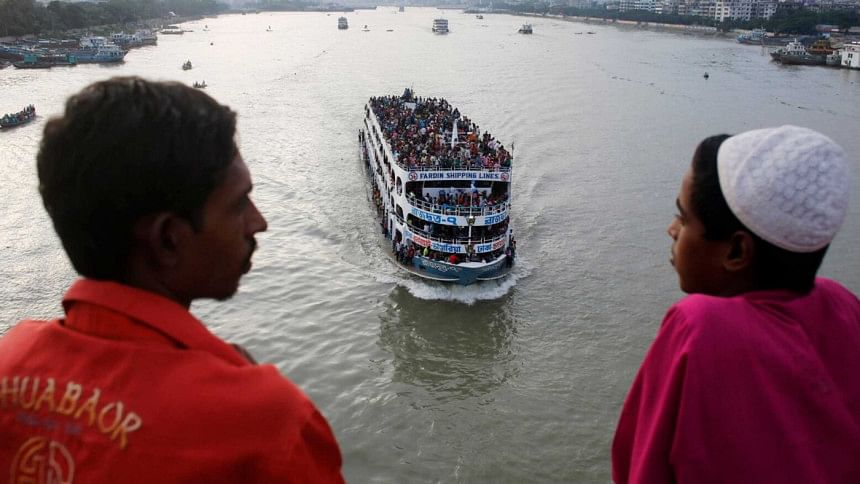Drowning: Most preventable, most neglected

In 2019, the World Health Organization (WHO) Global Report on Drowning said the most recent figure on annual global drowning toll stood at 235,000, with more than 90 percent of deaths by drowning occurring in low- and middle-income countries, and with Asia carrying the highest burden. The WHO report also placed drowning in the top 10 leading causes of death by unintentional injuries among children and young people worldwide, with children aged under five years disproportionately at risk, and males being twice as likely to drown as females. Drowning has cost the world over 2.5 million lives over the past decade. The vast majority of these deaths could and should have been prevented.
On April 28, 2021, for the first time ever, the United Nations (UN) adopted a resolution on drowning prevention during the 75th session of the UN General Assembly. Initiated by Bangladesh and Ireland, and co-sponsored by 79 countries, the resolution recognised the devastating effect of drowning across the world and declared July 25 as World Drowning Prevention Day (WDPD). The aim of WDPD is to promote facts and raise awareness about drowning, and what governments, life-saving organisations and those in the field of drowning prevention can do to help improve water safety to reduce preventable deaths.
Recognising that drowning is preventable, and that scalable, low-cost interventions exist, the resolution encouraged member states, on a voluntary basis, to undertake a range of coordinated interventions relevant to national circumstances. The resolution requested all 193 UN member states to develop national drowning prevention plans in line with WHO recommendations, ensure enactment and effective enforcement of water safety laws, encourage the registration of drowning deaths, and promote drowning prevention public awareness.
Action on drowning prevention presents an important opportunity to make progress towards targets within different UN Sustainable Development Goals (SDGs). There are clear links between drowning and other global agreements relevant to sustainable development, community resilience to climate change, and disaster risk reduction.
In Bangladesh, drowning is a regular phenomenon; people, especially rural inhabitants, perceive the cause of fatal or non-fatal drowning to be the "act of God." The main reasons of drowning, in fact, include lack of physical barriers between people and water; lack of supervision; lack of life-saving skills, including swimming and cardiopulmonary resuscitation (CPR); uncovered or unprotected water bodies and a lack of safe water crossings; lack of water safety awareness; travelling on waterways on overcrowded or poorly maintained vessels; and floods from extreme rainfall, storm surges or cyclones. Urgent, coordinated and multisectoral action on proven measures are needed, such as installing barriers to control access to water, teaching swimming, water safety and safe rescue skills, training bystanders in safe rescue and resuscitation, setting and enforcing safe boating, shipping and ferry regulations, and improving flood risk management, among others.
According to the WHO, drowning is one of the world's most preventable, neglected and persistent public health issues. Bangladesh has recognised drowning as an important public health issue with major impacts on children and youth. However, despite the magnitude of drowning incidents in the country, limited attention has been paid by the government to develop a national strategy on preventive measures. Government initiatives regarding drowning are still at the policy level.
Recently, Ecnec approved the "Integrated Community Based Centre for Child Care, Protection and Swimsafe Facilities Project" to establish 8,000 community day care centres to provide supervision of 200,000 under-five children in 45 upazilas under 16 districts, and to teach swimming to children aged 6-10 years through primary schools. Bangladesh Shishu Academy will implement this project in line with the Ministry of Women and Children Affairs, with technical support from the Centre for Injury Prevention and Research, Bangladesh (CIPRB). Besides, the Directorate General of Health Services (DGHS) has taken awareness-raising initiatives. The Non-Communicable Disease Control (NCDC) of the DGHS has been working on a draft national drowning prevention strategy since 2015, with technical support from the CIPRB. The strategy is focused on priority action areas—community-based actions, effective policies and legislation, surveillance and research, capacity-building and intersectoral collaboration.
A series of consultative workshops with relevant ministries and other stakeholders were held from 2017 to 2022 to make the draft more precise. After the UN resolution on drowning prevention, the line director of NCDC formed a nine-member committee to expedite the approval process. Keeping in line with the committee recommendations and stakeholder review comments from consultative workshops, the draft was updated with relevant facts and figures and is now in the process of submission.
In light of all this, it is high time to implement such a national strategy envisioning a drowning-free Bangladesh. Aiming to cut down drowning deaths by half by 2030, this strategy will provide the direction to prevent these unwanted and avoidable deaths.
Juliet Rossette is policy and partnership manager of Project Bhasa at the Centre for Injury Prevention and Research, Bangladesh (CIPRB).

 For all latest news, follow The Daily Star's Google News channel.
For all latest news, follow The Daily Star's Google News channel. 



Comments